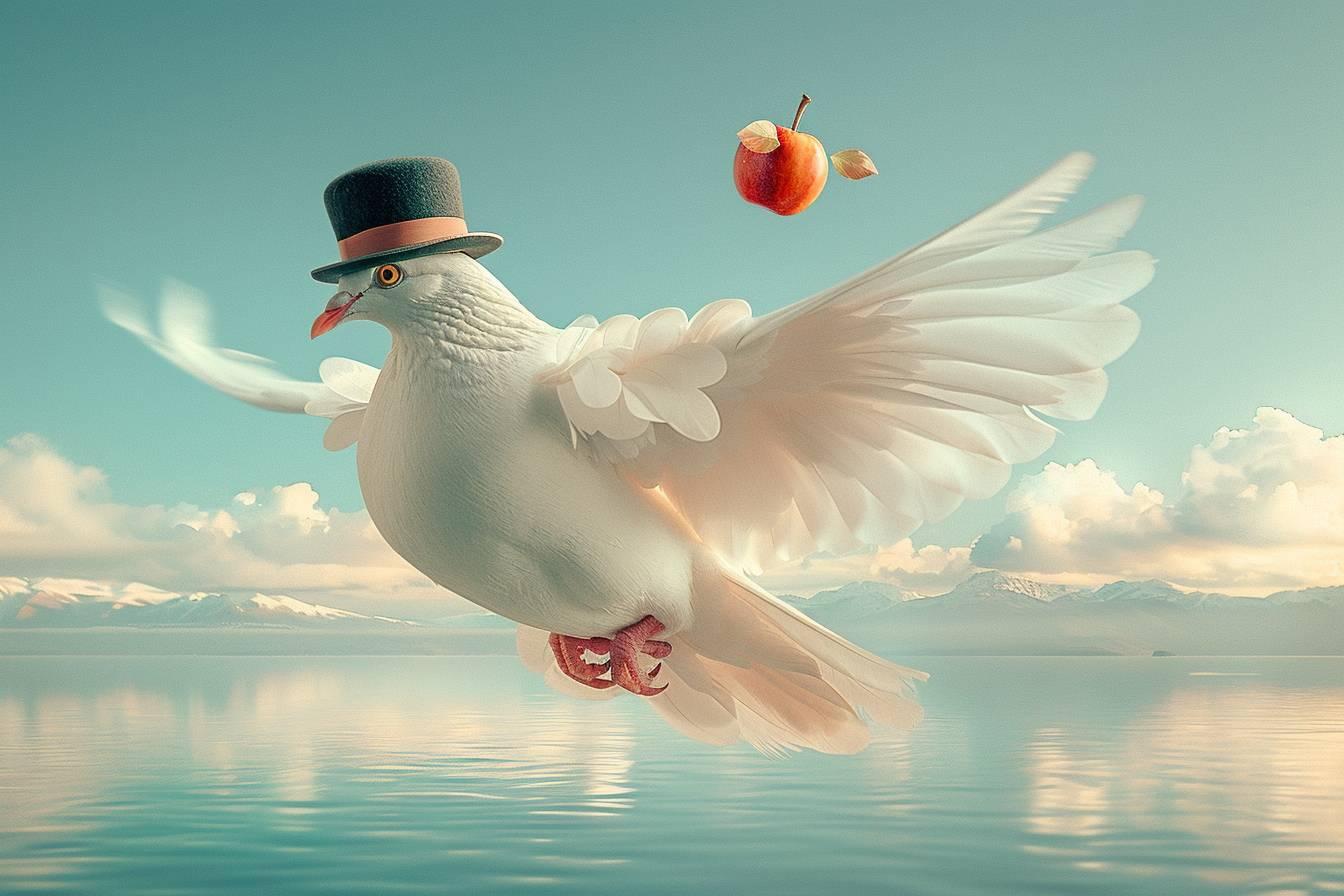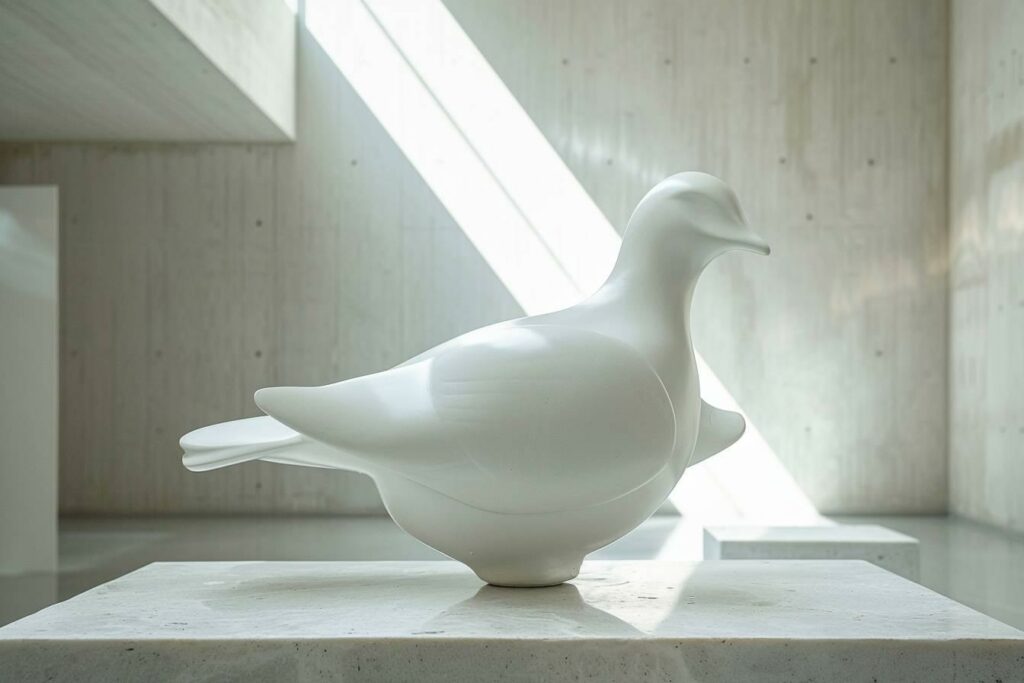René Magritte, the emblematic figure of Belgian surrealism, left an indelible mark on art history with his enigmatic and provocative works. Among his most striking creations, the dove occupies pride of place, symbolizing both peace and freedom in a world tinged with dreamlike imagery. This recurring image in the artist’s work has had a profound influence on contemporary art, becoming a surrealist motif that is instantly recognizable.
The flight of the dove in the Magrittian universe
In Magritte’s pantheon of symbols, the white bird stands out for its soothing yet unsettling presence. The Belgian painter, born in 1898, captured the essence of this graceful animal as a vehicle for his reflections on reality and illusion. The dove, traditionally associated with peace, takes on a new dimension under Magritte’s brush, oscillating between the familiar and the strange.
In his paintings, the artist often places the dove in unexpected contexts, creating a visual shock characteristic of surrealism. It can be seen floating in an azure sky, sometimes disproportionately enlarged, or fused with other natural elements such as clouds. This singular approach invites viewers to reconsider their perception of the world and question the very nature of reality.
Here are some of Magritte’s emblematic works featuring the dove:
- “Le Retour” (1940): a giant dove occupying almost the entire space of a room
- “L’Idole” (1965): A white bird whose body is made of blue sky
- “Le Grand Famille” (1963): An imposing dove flying over a seascape
These representations testify to Magritte’s fascination with plays on scale and improbable associations, two key elements of his unique style.
Symbolism and interpretations of the Magrittian dove
Magritte’s dove transcends its traditional meaning to become a complex, multidimensional symbol. In the painter’s work, the bird embodies not only peace, but also the freedom of the spirit and transcendence of the limits of everyday reality. Surrealism, a movement of which Magritte was one of the most brilliant exponents, sought to explore the depths of the unconscious and challenge artistic and social conventions.
The interpretation of the dove in Magritte’s art can vary from work to work and context to context. Sometimes, it appears as a messenger between two worlds, that of reality and that of dreams. In other cases, it symbolizes the fragility of peace in a world plagued by conflict, a theme particularly relevant to Magritte’s creative period, marked by two world wars.
The following table presents some possible interpretations of the dove in Magritte’s work:
| Symbolism | Interpretation |
|---|---|
| Peace | Universal aspiration to harmony and non-violence |
| Freedom | Freedom from mental and social constraints |
| Transcendence | Spirit’s ability to rise above the material world |
| Duality | Coexistence of the real and the imaginary in our perception |
These multiple facets of the Magrittian dove make it a rich and versatile symbol, capable of eliciting profound reflections on the human condition and our relationship with the world.

The legacy of the surrealist dove in contemporary art
The influence of René Magritte and his emblematic dove extends far beyond his own era, deeply permeating contemporary art. Many artists, inspired by the Belgian master, have taken up and reinterpreted this motif in their own creations. The Magrittian dove has become a leitmotif of surrealist and post-surrealist art, a symbol of boundless creative freedom.
Contemporary art echoes the dove in a variety of forms:
- Monumental installations featuring giant doves, reminiscent of Magritte’s play on scale
- Digital works in which the white bird metamorphoses and blends into virtual environments
- Hybrid sculptures mixing the dove with other elements, in the tradition of Surrealist associations
- Artistic performances featuring live doves, blurring the boundary between art and reality
Contemporary artists such as Jeff Koons, Damien Hirst and Banksy have all, in their own way, paid tribute to Magritte’s legacy by incorporating references to the dove into their work. In so doing, they perpetuate the surrealist tradition while adapting it to the concerns and aesthetics of the 21st century.
The surrealist dove thus continues to embody Magritte’s cherished values of peace and freedom, while constantly reinventing itself to remain relevant in today’s artistic landscape. It remains a powerful vehicle for reflection on our world, inviting audiences to question their perceptions and imagine new possibilities.
By appropriating and reinterpreting the Magrittian dove motif, contemporary art continues to explore the themes dear to Surrealism: the questioning of reality, the power of the imagination and the quest for a freer, more peaceful world. In this way, Magritte’s legacy lives on, continuing to inspire and challenge artists and viewers the world over.

